Domain II — Assessment and Program Planning
Competency 3: Apply knowledge of the evaluation and assessment process and of appropriate assessment strategies to inform instructional design and to support students.
TEA, "Special Education Referral Process for an Initial Evaluation"
This handout will help the learner follow along with the Special Education Referral for Initial Evaluation Process-Guidance for Establishing Local Education Agency Procedures video.
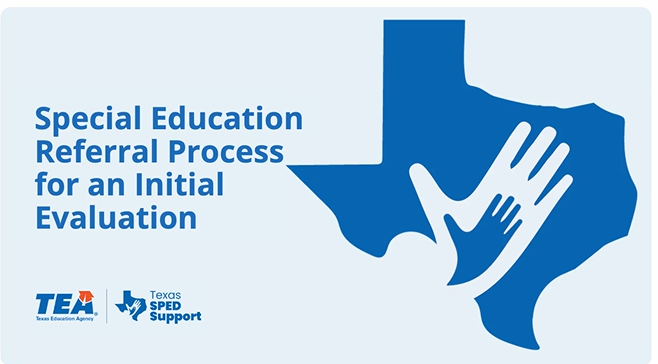
TEA, "Guidance for the Comprehensive Evaluation of Specific Learning Disabilities"
This guidance document will assist LEAs in conducting comprehensive educational evaluations of students suspected of having an SLD; understanding the two methods of SLD identification; and providing information in the full and individual evaluation (FIE) that will assist ARD committees in their decision-making process.
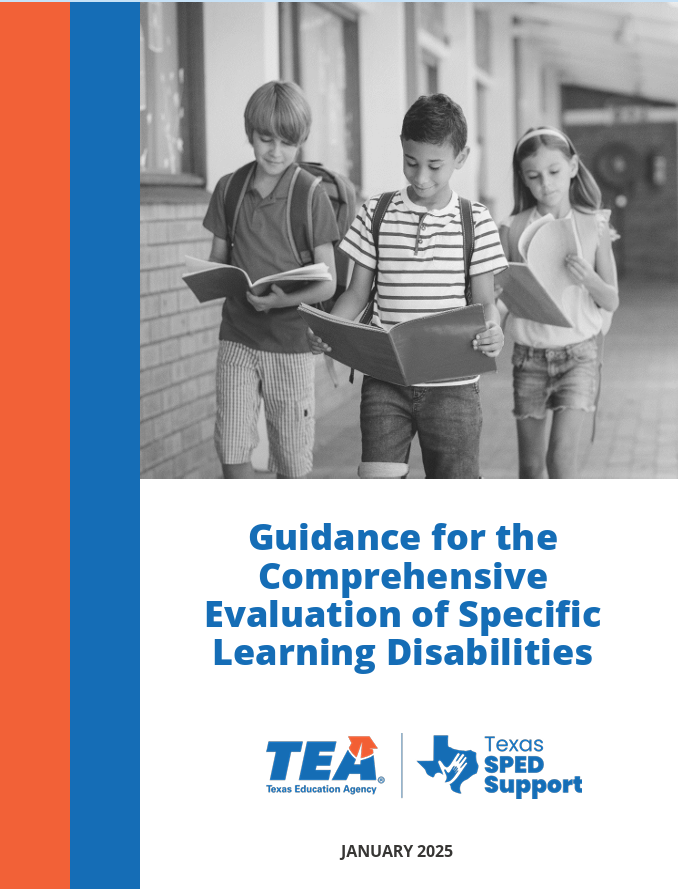
TEA, "Functional Behavior Assessment (FBA)"
Participants will be able to define functional behavior assessment, identify when to consider a functional behavior assessment, and identify the steps for conducting a functional behavior assessment.
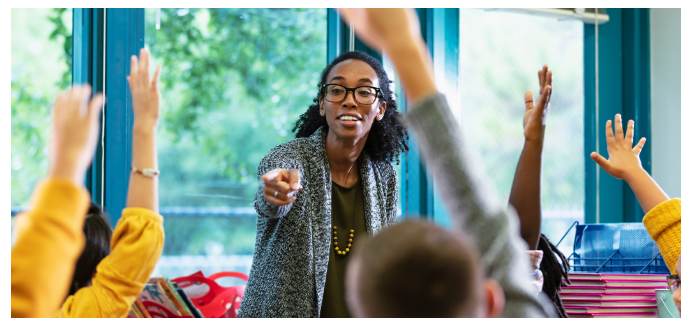
TEA, "Conducting Necessary Post-Secondary Transition Assessments"
The purpose of this training is to give educators the information and tools needed to conduct meaningful transition assessments. Conducting age-appropriate transition assessments is the foundation for building quality transition services for students with disabilities.
TEA, "Data Collection: Trial by Trial Recording"
This data collection form is intended for use by teachers, paraprofessionals, and other service providers collecting data for student Individualized Education Program (IEP) goals and baseline data to determine a need for new/updated IEP goals or behavior intervention. Trial-by-trial data collection is often used for academic tasks. Record data for each opportunity or trial, the student is given. The data may be reported in trials or in percentages, depending on how the goal is written.
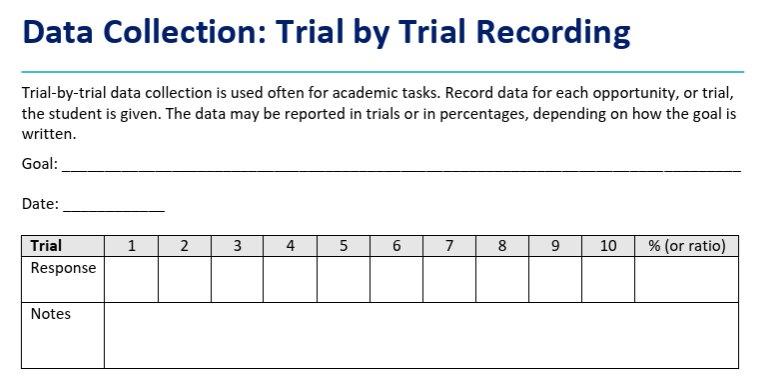
TEA, Mathematics Progress Monitoring System
The TIER Computational Fluency Progress-Monitoring System measures students' computational fluency over time, from kindergarten through grade 6. It provides educators with valuable data to assess student growth in grade-level content standards and evaluate instructional effectiveness. The system utilizes curriculum-based measurements (CBM)— timed assessments that serve as indicators of students’ general proficiency in computational fluency, a key component of mathematics instruction.
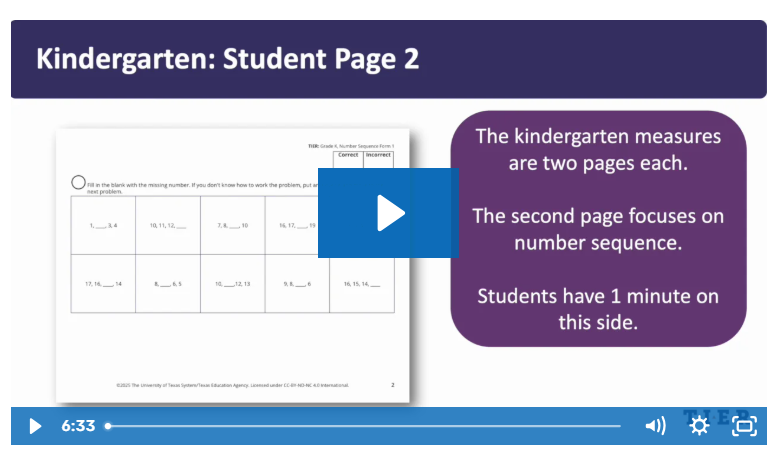
The IRIS Center, Peabody College, Vanderbilt University, "Progress Monitoring: Reading"
This resource introduces users to progress monitoring in reading, a type of formative assessment in which student learning is evaluated to provide useful feedback about performance to both learners and teachers (est. completion time: 2 hours).
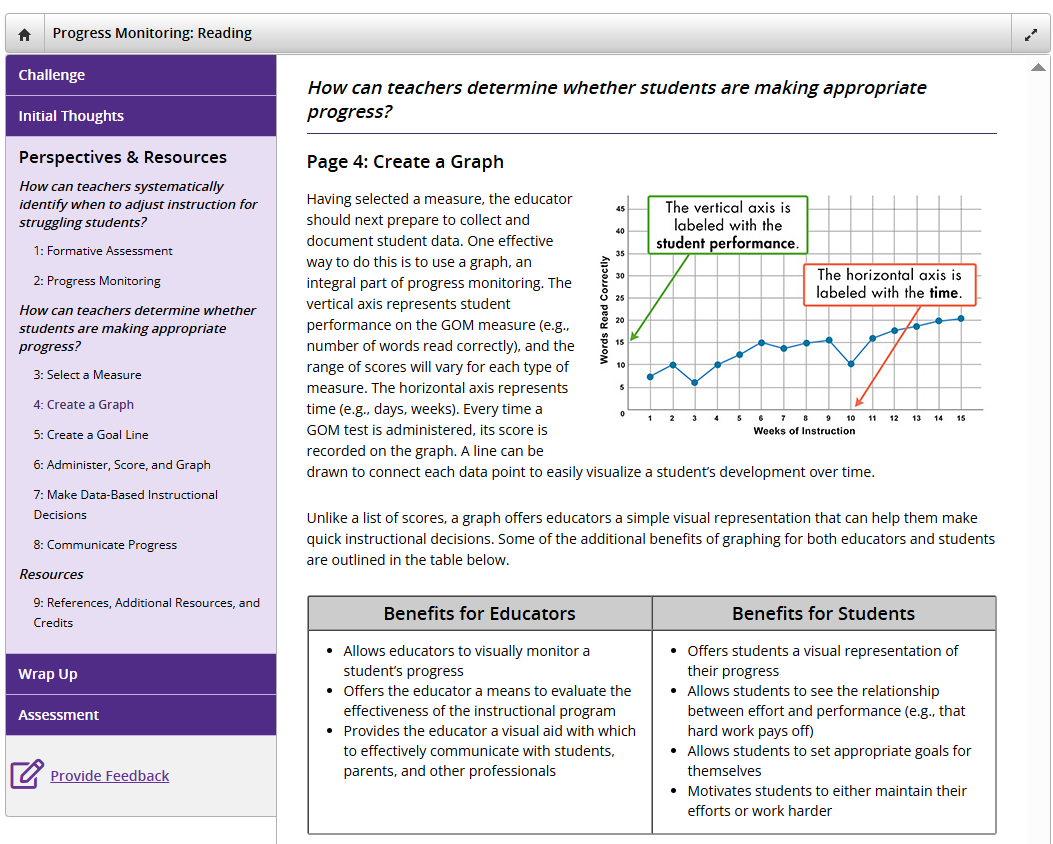
TEA, Data Collection: A-B-C Recording
This data collection form is intended for use by teachers, paraprofessionals, and other service providers collecting data for student Individualized Education Program (IEP) goals and baseline data to determine a need for new/updated IEP goals or behavior intervention.
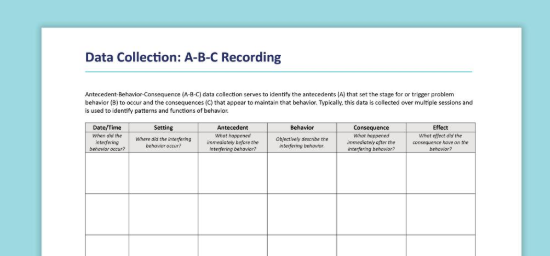
National Association of Special Education Teachers "Assessment in Special Education Series"
An educational resource that focuses on the process used to determine a child’s specific learning strengths and needs, and establish whether or not a child is eligible for special education services. It includes previous and current issues of NASET"s articles related to assessment including introductions to assessments, identification of high risk students, referrals, parental consent, requirements of evaluations, comprehensive assessments, scoring terminology, student behaviors during assessments, components of a report, requirements of an IEP, curriculum based measurements, assessments and accommodations, special education acronyms, tests of academic achievement, interpreting special education legal aspects, and sharing information with families.
TEA, Autism Assessment Toolkit
This course is designed to help evaluation teams conduct best practices assessment of autism. It includes information on legal requirements, myths and realities, eligibility, formal and information assessment and more. Participants will be able to: discuss the assessment process from identifying concerns through writing goals and objectives discuss the importance of providing assessments by a knowledgeable and experienced team.

TEA, Texas Statewide Leadership for Autism Training, ESC 13 "Evaluations"
This website site provides links to 20 types of academic achievement assessments along with a summary of each and gives resources for several evaluation categories with explanations and examples
TEA, Creating an Assessment Plan
The course provides guidelines for developing an assessment plan to effectively implement a multi-tiered system of supports (MTSS). This course includes strategies for effectively using assessment data to support student success.

The IRIS Center, Peabody College, Vanderbilt University "Related Services"
This module offers a description of related services and an overview of the benefits they provide to students with disabilities in the general education classroom. It highlights five commonly used related services (Physical Therapy, Occupational Therapy, Speech-Language Pathology Services, Social Work Services, and Psychological Services) and briefly highlights many of the other related services as identified through IDEA '04.
This toolkit covers the following areas in regards to students who are English Language Learners: referral, identification, assessment, and service delivery to ELs with disabilities. considering the influence of language differences and disability on learning behaviors, developing an IEP for an English Learner with a disability (including a checklist of considerations), how to use data from the Office of Civil Rights' Civil Rights Data Collection (CRDC), and selecting appropriate accommodations for students with disabilities.
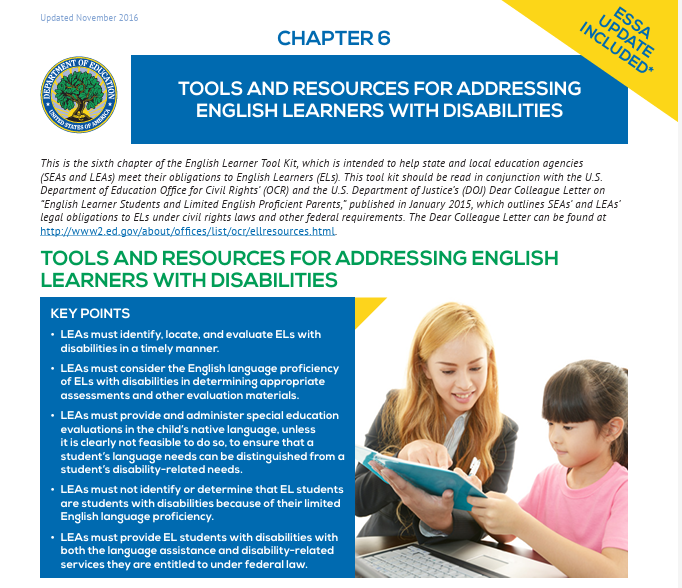
Chapter 2: Effective Partnerships in Collaborative Settings (Educator)
In this course, educators and staff will define the roles and responsibilities of paraprofessionals, teachers, and related service providers in collaborative settings. They will explore essential components for building strong communication systems and learn practical strategies to use clear expectations and cooperative relationships to enhance positive outcomes for all students.
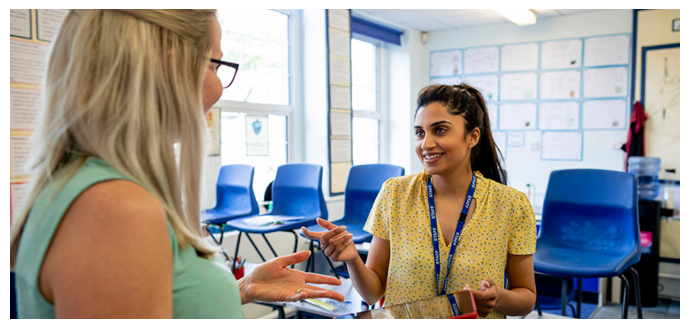
This state guidance document assists educators in taking full advantage of having a paraprofessional in their classroom. The information addresses both general and special education settings including educator/ paraprofessional roles and responsibilities.
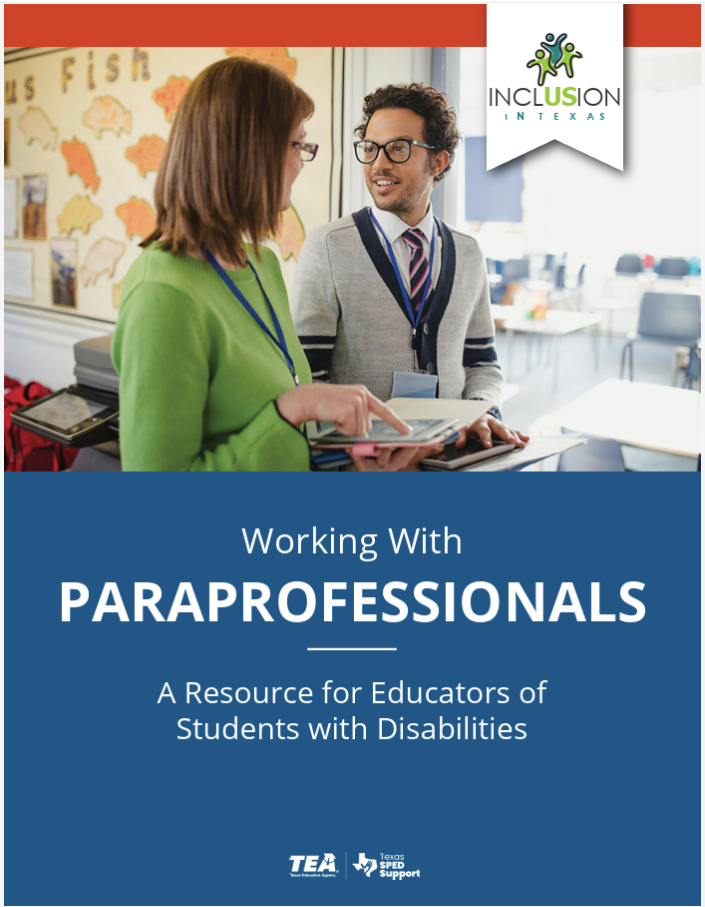
TEA ”Promote Communication and Collaborative Relationships”
This article discusses key elements in successful communication and collaborations, including building strong communication, collaborative relationships, classroom visits, and professional development for staff.
TEA, "Standards-Based Individualized Education Program (IEP) Process Training"
The intent of this training is to provide participants with an understanding of the SB IEP process for gathering student data, including the full and individual evaluation (FIE), to write the student’s present levels of academic achievement and functional performance (PLAAFP) statement, to draft measurable annual goals with short-term objectives/benchmarks, if appropriate, and to create a data collection system for monitoring progress of the annual goals.

Conducting Necessary Transition Assessments
The purpose of this training is to give educators the information and tools needed to conduct meaningful transition assessments. Conducting age-appropriate transition assessments is the foundation for building quality transition services for students with disabilities.
Education Records Bureau: Communicating Assessment Results with Students' Families
High-quality assessments and the data insights they generate are powerful tools for educators to monitor students’ progress — and they can also offer valuable insights to families. After all, we know educators and families both play critical roles in driving student growth. However, communicating assessment results and their meaning to families can be challenging. This is especially true when it comes to standardized assessments that use complex systems to scale scores or measure against norm groups. This article highlights 5 ways to communicate results to stakeholders.
TEA, Accommodations and Modifications - Texas SPED Quick Learns
This video clearly defines and differentiates between accommodations and modifications in the educational setting, offering practical examples for each. Educators and instructional leaders will gain a comprehensive understanding of how to effectively implement these strategies to meet the diverse needs of students, fostering an inclusive learning environment.
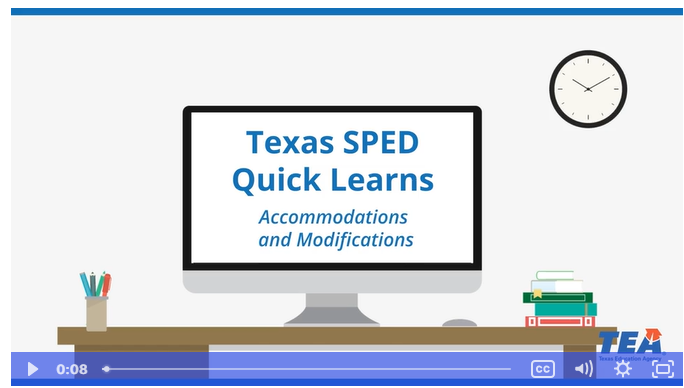
A vast library of essential tools and support for educators to enhance learning for students with diverse needs. You’ll discover valuable information on how to integrate these assistive technologies effectively, including guides on selecting the right tools, training materials for both students and staff, and examples of best practices.
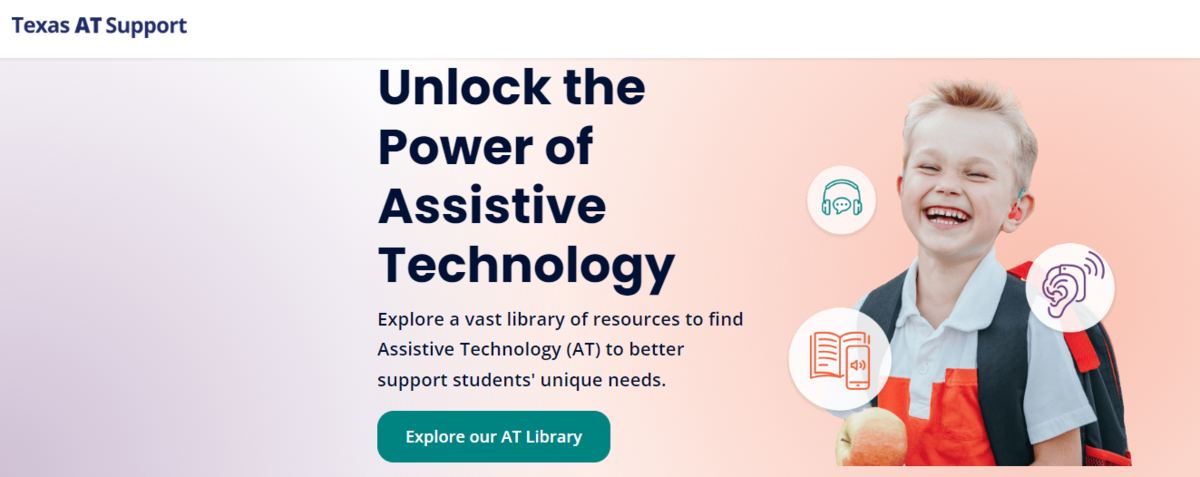
Accommodation Central
The key to teacher success in the classroom lies in having appropriate adaptations, accommodations, and modifications made to the instruction and other classroom activities. Access various resources and accommodations to pinpoint the ideal solution for student success.
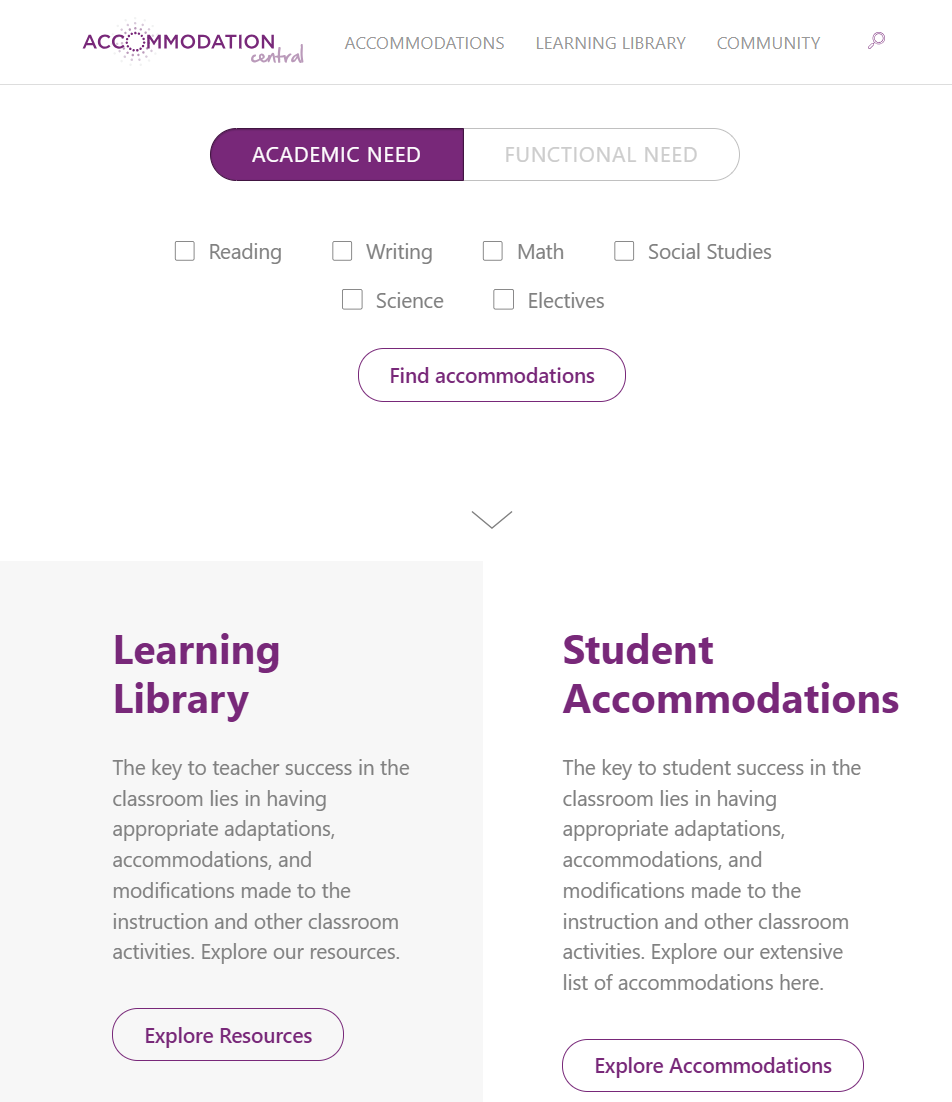
TEA, Data Collection and Progress Monitoring Collection
This collection includes online courses, instructional videos, printable tools, and customizable templates designed to help Texas educators meet these federal requirements while improving outcomes for students with disabilities.
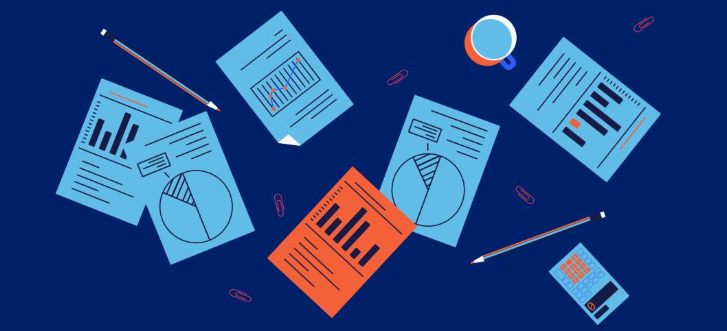
TEA, “Technical Assistance: Individualized Education Program (IEP) Development”
Before digging into the details of Individualized Education Program (IEP) development, take a minute to set your mind toward high expectations and rigorous goals for students with disabilities. Without this mindset, the IEP will fall short, and our students will not achieve all that they are capable of. TEA believes that there is shared responsibility across the state to ensure that all students, including students with disabilities, are held to rigorous academic standards and high expectations. The IEP must be individualized, based on the unique needs of that child, and designed to enable him or her to work towards grade-level content standards and achieve challenging goals. Proper provision of a free appropriate public education (FAPE) means that all students have access to the supports and services that will prepare them for success in college, careers, and independence.
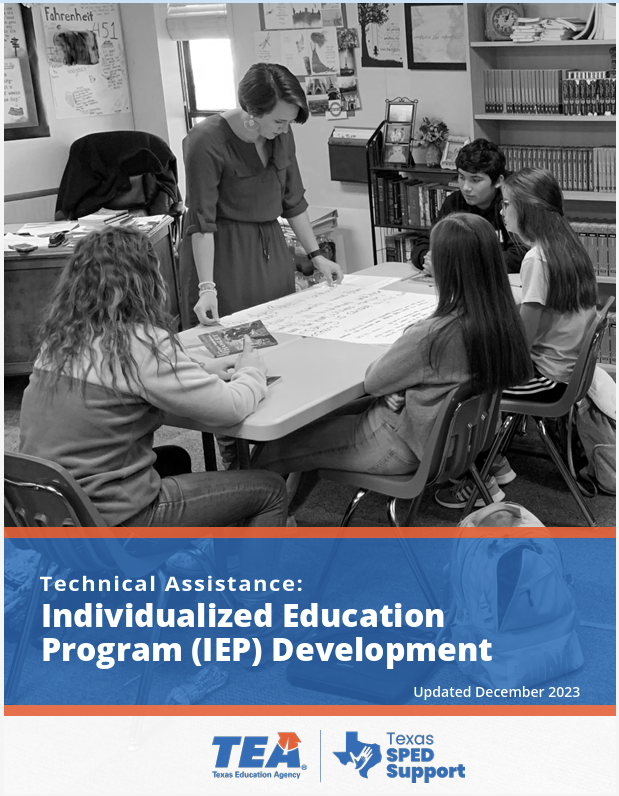
In this pathway, educators examine systems for collecting and managing screening data, learn how to analyze screening data, and identify connections between screening data and student-level interventions.
TEA, "Self-Determination TEKS Alignment
Organized by grade band and subject area, the TEKS Alignment Collection outlines the knowledge and skills that align with self-determination as defined by the research of Dr. Michael Wehmeyer and The National Gateway to Self-Determination Project. Educators may use the Self-Determination Alignment Collection to consider where self-determination skills are addressed in each content area or to develop standards-based annual individualized education program (IEP) goals for a specific student.
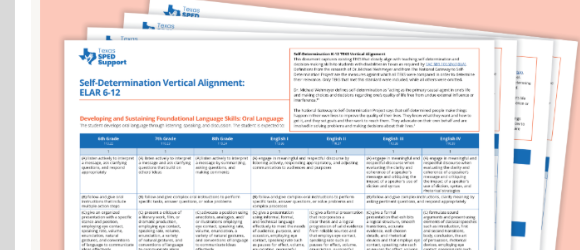
Competency 4: Apply knowledge of contributing to, monitoring, and reporting on individualized programming for students.
TEA, Recording Student Progress
Marissa talks about collecting data using information from the student's entire educational team.
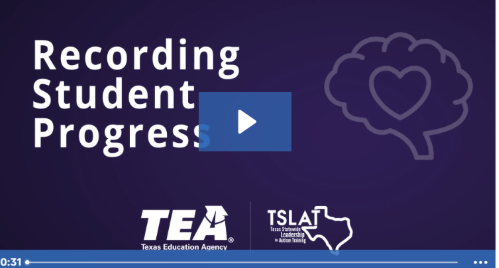
Chapter 8: Progress Monitoring and Communicating Progress to Families (Educator)
In this course, instructional leaders will examine examples of progress-monitoring data to inform collaborative planning. They will engage with instructional question stems to enhance their ability to guide data analysis during meetings. Additionally, school leaders will identify key "look-fors" during classroom walk-throughs that align with instructional adjustments based on data analysis.

Chapter 6: Assessments with Collaborative Instruction and Flexible Groupings (Educator)
In this course, educators will explore how routine assessment is used to develop data-driven instruction and how collaborative instruction and flexible grouping strategies can promote regular assessment and progress monitoring. Educators will learn actionable steps to effectively implement assessments in collaborative settings.

Chapter 7: Co-planning for Instruction (Educator)
In this course, educators will understand how specially designed instruction is supported through co-planning and explore methodology for data-driven collaborative meetings. Additionally, they will create a co-planning agenda and action plan to support effective implementation.
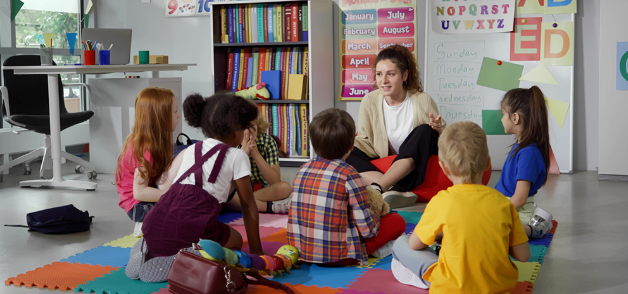
TEA, "Language and Communication Focused IEPs"
This 11-part course program series is intended to prepare educators and school administrators on how to use the IEP Discussion Guide in the best way possible. Each course covers a chapter in the IEP Discussion Guide.

This 90-minute module highlights classroom considerations that promote access to the general education curriculum for students with disabilities.
TEA, "Next Steps to Independence: Skills and Strategies"
The Next Steps checklist can also serve as an informal transition assessment for self-determination skills. It is divided by age and grade ranges, starting with Birth to Age 3 and ending with 18+ (Ages 18-22), highlighting critical developmental milestones.
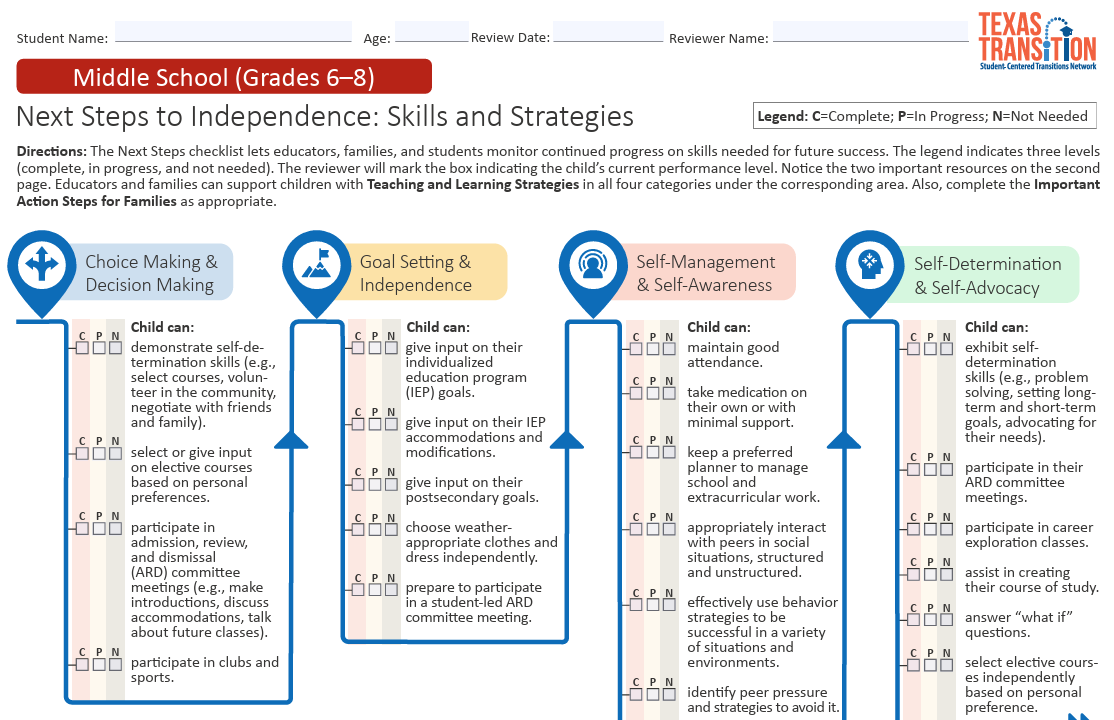
The purpose of this training is to give Texas educators the information and tools needed to plan a coordinated set of activities, also known as the transition services for students with disabilities.
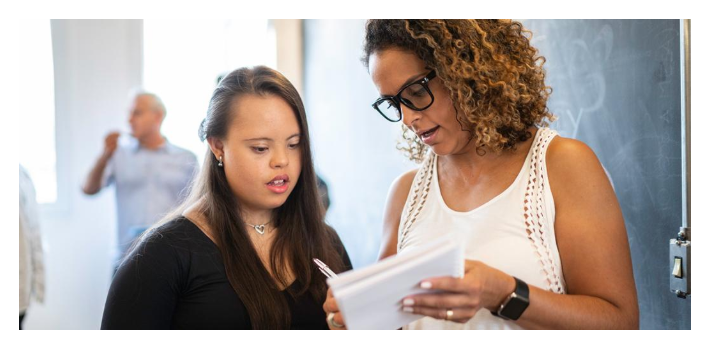
The TIER Progress Monitoring Tool is a free progress monitoring platform to house data for students receiving interventions. It is intended for use with the accompanying instructional video.
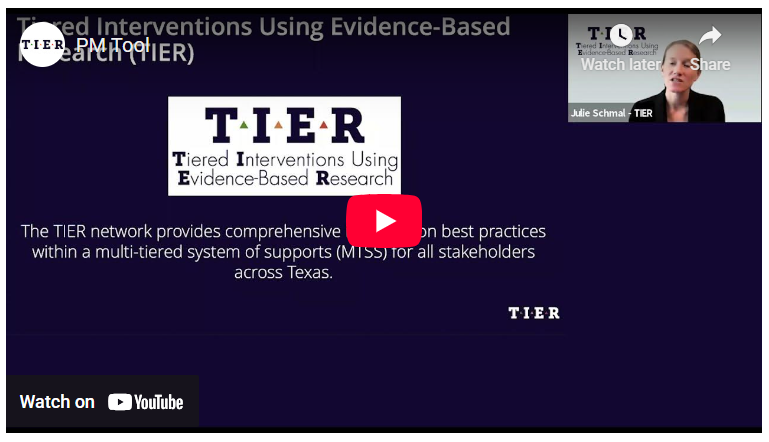
Alignment to State Standards: Involving Young Students in the IEP Process
In this video, Ayo Jones discusses ways to involve young students in the IEP process. This video aligns with the Rubric of Effective Practices Quality Indicator I: Alignment to State Standards.
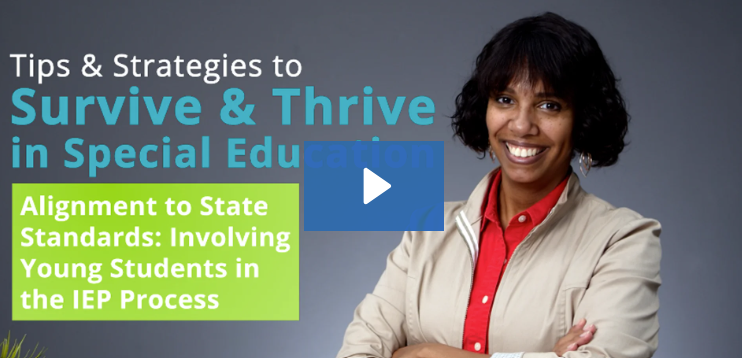
The IRIS Center, Peabody College, Vanderbilt University "Student Centered Transition Planning
This 2-hour online module will help users to better understand the benefits of student-centered transition planning, identify ways to involve students in collecting assessment information and developing goals, and be able to prepare students to lead their own IEP meetings.
In Texas, the admission, review, and dismissal (ARD) committee is responsible for making decisions about a child’s special education program. The ARD committee is also known as the individualized education program (IEP) team in other states. After the initial evaluation report is complete, an ARD committee must meet to review the evaluation and determine if the child meets eligibility criteria for special education and related services.